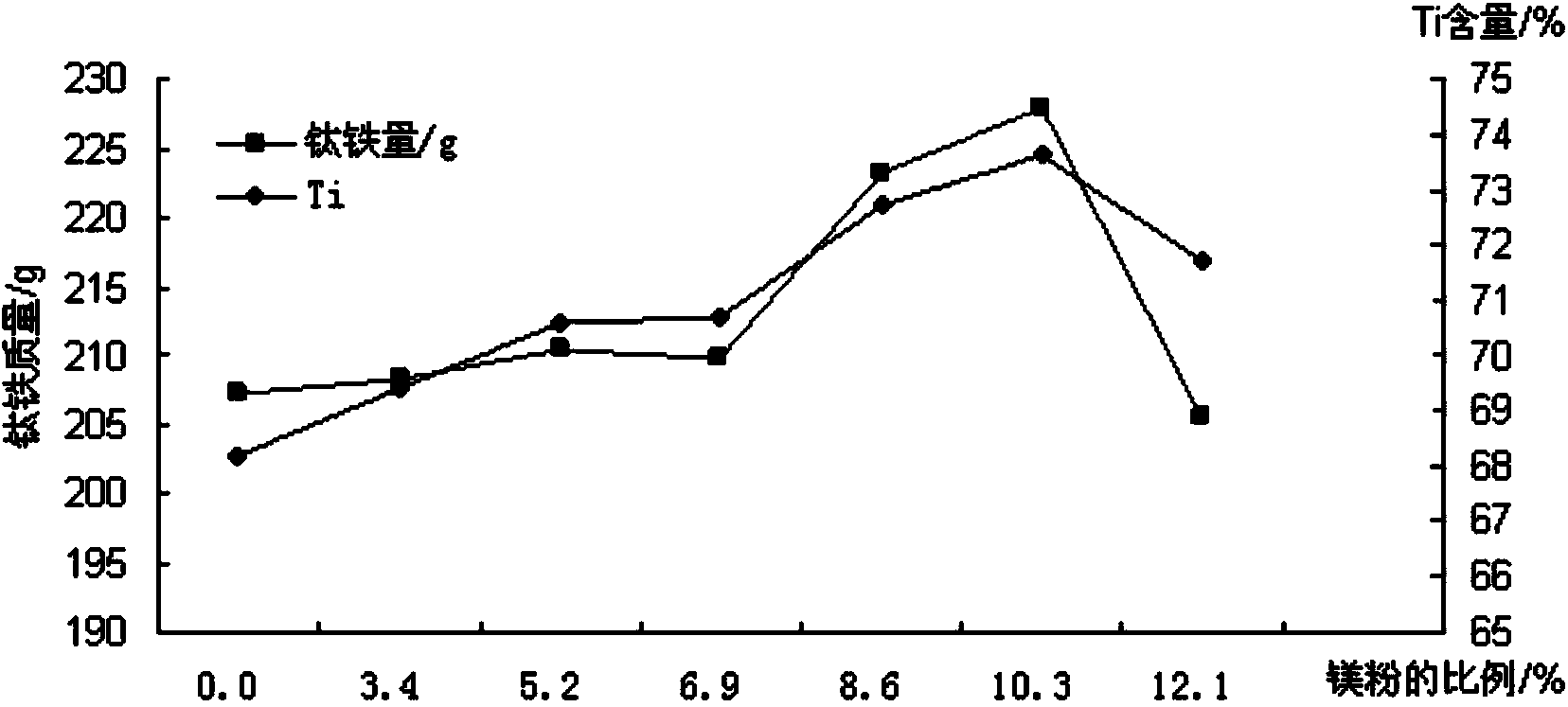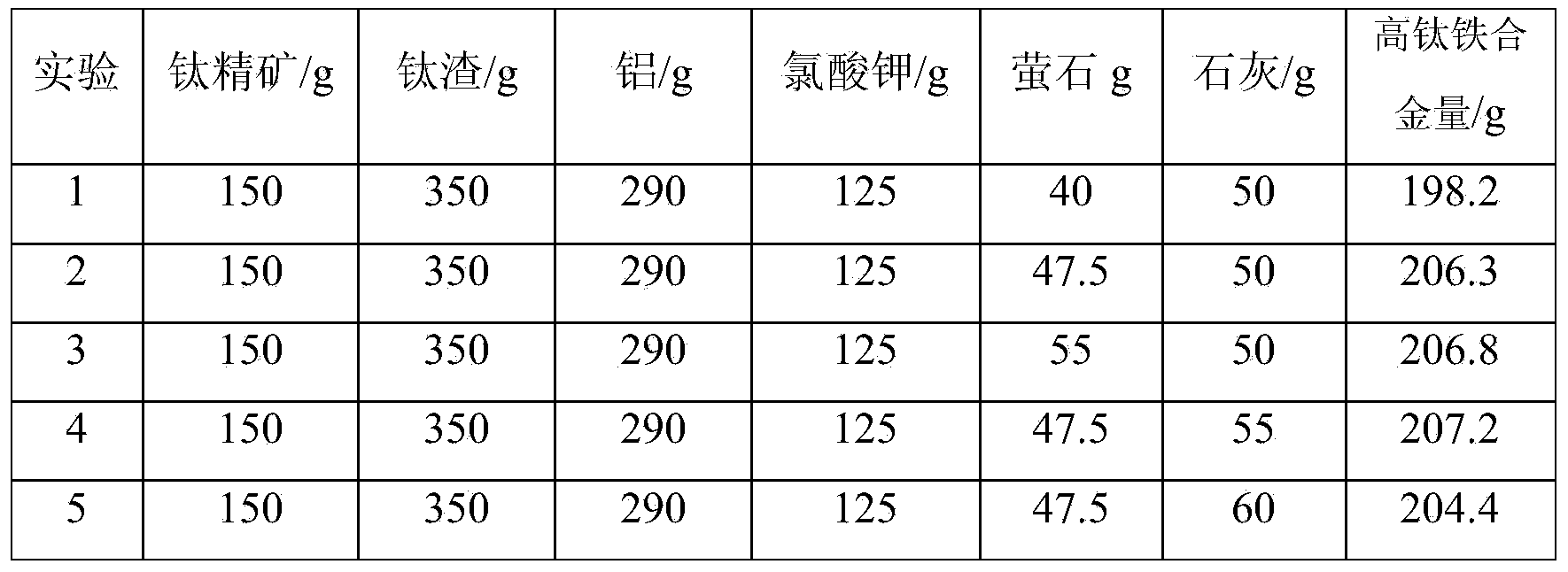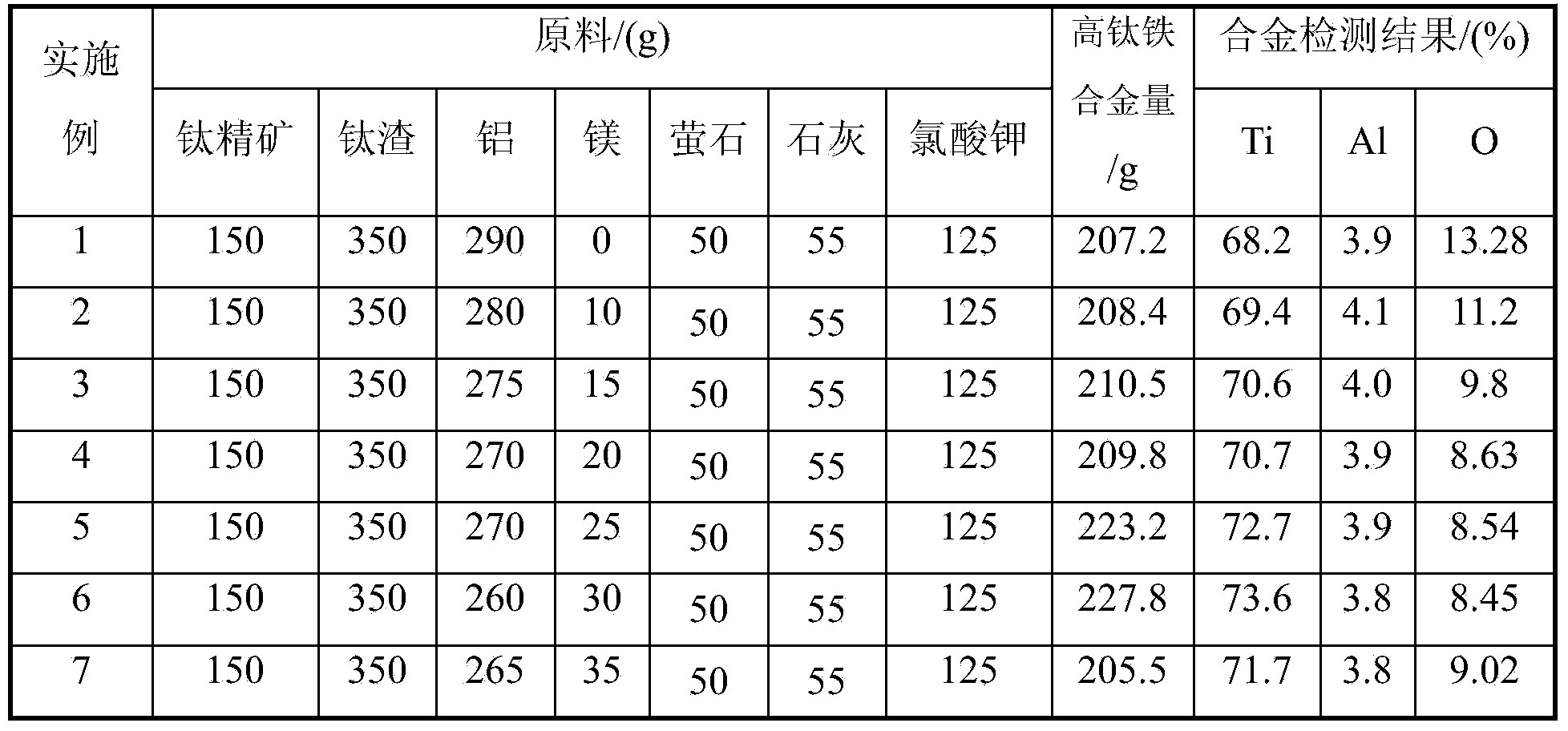Method of producing high-titanium-iron alloy by virtue of aluminum-magnesium process
A technology of iron alloy and aluminum-magnesium method, which is applied in the field of high-titanium-iron alloy production by aluminum-magnesium method, can solve the problems of high residual oxygen content and residual aluminum content of titanium-iron alloy, low efficiency and high cost, so as to reduce oxygen content, reduce pressure, improve The effect of liquidity
- Summary
- Abstract
- Description
- Claims
- Application Information
AI Technical Summary
Problems solved by technology
Method used
Image
Examples
experiment example 1
[0042] Changing the amount of flux fluorite and lime in the experiment mainly affects the melting point and fluidity of slag, and then changes the separation effect of slag and high-titanium ferroalloy, thus affecting the yield and output of high-titanium ferroalloy.
[0043] Table 3 The influence of the change of flux on the output of high-titanium ferroalloy
[0044]
[0045] It can be seen from Table 3 that: (1) the appropriate dosage of fluorite is 40-55g when the titanium raw materials (titanium concentrate and titanium slag), reducing agent (aluminum powder), and heating agent (potassium chlorate) have not changed; (2) The reasonable dosage of lime is 50-60g. If the amount of fluorite is less than 40g, the melting point of slag will become higher, the separation of slag and ferro-titanium alloy will be difficult, the output of ferro-titanium alloy will be significantly lower, or the ferro-titanium alloy will contain slag. If the amount of fluorite added>55g, there is...
experiment example 2
[0047] When 150g of titanium concentrate, 350g of titanium slag, 50g of fluorite, 55g of lime, 125g of potassium chlorate, and 290g of aluminum powder, the influence of the ratio of magnesium powder instead of aluminum powder on the quality of high titanium ferroalloy is shown in figure 1 .
[0048] from figure 1It can be seen that when the ratio of magnesium powder replacing aluminum powder is controlled at 8.6-11.2%, with an average of 10%, the effect is the best. If the amount of magnesium powder used is too large, the splash loss will increase due to the excessive reaction of magnesium, and the grade of titanium will decrease due to the excessive absorption of oxygen in the air. If the amount of magnesium powder used is too small, its effect is poor, and the purpose of adding cannot be achieved.
Embodiment 1~7
[0050] After adopting the mass ratio of raw materials in Table 3 to mix evenly, the operation is as follows:
[0051] a. Heat the raw material to 200°C for 2 hours, then dry, dehydrate and deoil;
[0052] b, pulverizing the raw material processed in step a to a particle size of 1.5 mm;
[0053] c. Weigh and mix evenly according to the proportion composition required by the test, and put it into a magnesia crucible; the mixing degree is required to be ≥ 98.5%;
[0054] d. Put the upper part of the mixed raw materials in the crucible into the fuze, ignite and ignite the reaction;
[0055] e. After the reaction is completed, cover the surface with a layer of coal powder to isolate the air; after cooling, take out the reaction product;
[0056] f. Crushing and separating the slag and the alloy to obtain a high-titanium ferroalloy.
[0057] The experimental results are shown in Table 4:
[0058] Table 4 Raw material ratio of different reducing agents and detection results of hi...
PUM
| Property | Measurement | Unit |
|---|---|---|
| particle size | aaaaa | aaaaa |
Abstract
Description
Claims
Application Information
 Login to View More
Login to View More - R&D Engineer
- R&D Manager
- IP Professional
- Industry Leading Data Capabilities
- Powerful AI technology
- Patent DNA Extraction
Browse by: Latest US Patents, China's latest patents, Technical Efficacy Thesaurus, Application Domain, Technology Topic, Popular Technical Reports.
© 2024 PatSnap. All rights reserved.Legal|Privacy policy|Modern Slavery Act Transparency Statement|Sitemap|About US| Contact US: help@patsnap.com










